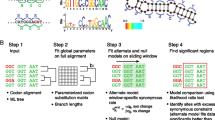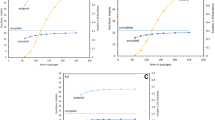Abstract.
It has been hypothesized that a large fraction of 24% noncoding DNA in R. prowazekii consists of degraded genes. This hypothesis has been based on the relatively high G+C content of noncoding DNA. However, a comparison with other genomes also having a low overall G+C content shows that this argument would also apply to other bacteria. To test this hypothesis, we study the coding potential in sets of genes, pseudogenes, and intergenic regions. We find that the correlation function and the χ2-measure are clearly indicative of the coding function of genes and pseudogenes. However, both coding potentials make almost no indication of a preexisting reading frame in the remaining 23% of noncoding DNA. We simulate the degradation of genes due to single-nucleotide substitutions and insertions/deletions and quantify the number of mutations required to remove indications of the reading frame. We discuss a reduced selection pressure as another possible origin of this comparatively large fraction of noncoding sequences.
Similar content being viewed by others
Author information
Authors and Affiliations
Additional information
Received: 27 December 1999 / Accepted: 5 July 2000
Rights and permissions
About this article
Cite this article
Holste, D., Weiss, O., Grosse, I. et al. Are Noncoding Sequences of Rickettsia prowazekii Remnants of ``Neutralized'' Genes?. J Mol Evol 51, 353–362 (2000). https://doi.org/10.1007/s002390010097
Issue Date:
DOI: https://doi.org/10.1007/s002390010097




